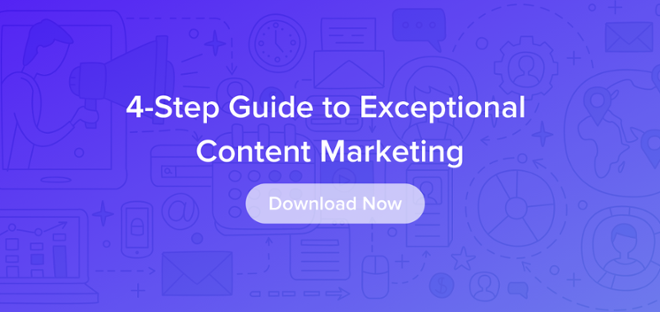
If you’ve invested your time and knowledge in content creation, you know the sting of an article that doesn’t get results. It’s disheartening — and even a little painful.
But poor engagement doesn’t mean people don’t need your information. In fact, 77 percent of B2B buyers perform independent research before ever speaking with a sales rep. Consumers crave education when making purchase decisions. They just can’t read everything.
To overcome the information overload, you have to put relevant content in the path of readers who need it. That’s why conceding to the “If you build it, they will come” mentality will only flatline your results.
Your topic will ultimately dictate the success of your content. To create content that speaks to your audience, use these eight tips:
- Explore customer personas and their challenges. Well-researched personas help you understand your customers’ expectations, assumptions, motivations, and goals. Your content should always address these points and live in publications that serve your specific audience. Find out more about developing customer personas here.
- Mine popular sites to inspire article ideas. To navigate the exploding content supply, online users have adjusted their search methods to find what they need more efficiently. They visit tried-and-true websites and use social platforms like Quora, where they can ask industry-related questions and share answers. Quora is also a topic gold mine for content creators, putting the questions your audience is asking right at your fingertips.
- Join forces with your sales team. Education-focused content helps your sales team form relationships with prospective clients and become a trusted resource for information. Think of your content as a map that guides prospects through the sales cycle. Collaborate with your sales team to create content around pain points they frequently hear about from prospects. Arm your sales team with these articles so they’ll be prepared to combat these specific questions or concerns when they arise.
- Listen to your current customers. Your current customers know more about the problems they’re facing than anyone else. Engage your customer service team in the content creation process, and learn about the pitfalls or setbacks customers often face. Then, write posts that educate your clients on overcoming these issues to extend your client lifetime value and prime prospects to become better clients in the future.
- Pay attention to industry influencers. Every industry has trusted names that people turn to for insight or advice. Find out who your influencers are, and see what they’re talking about online. They’re likely part of a LinkedIn Group where they regularly share content, and you can subscribe to (or create) a Twitter List to keep tabs on what they’re up to. Take note of trending topics or reader questions, and you’ll start to discover potential article topics your readers will want to learn about.
- Track content performance on popular publications. Visit popular industry publications often, and analyze the articles your audience is actively viewing and commenting on. Look for holes in these topics or ways you can add a fresh spin. BuzzSumo is a great tool for analyzing high-performing content, and RSS feeds will deliver relevant content from a particular website right to you, making it easier to monitor shares and comments.
- Look to keyword tools for inspiration. When your audience needs answers fast, they’ll turn to a trusty keyword search to guide them to the right content. Google Keyword Planner will show you the questions that your audience is asking and help spark article ideas. The HubSpot Keyword Tool can also point you to popular keywords in your industry.
- Distribute with purpose. Don’t let your articles live and die on your blog or an external publication. Strategize potential distribution channels — your LinkedIn profile, LinkedIn Groups, Twitter, a Quora discussion, etc. — and make sure your content speaks to the right audience.
If you settle for the “If you build it, they will come” mentality, your content won’t catch the gaze of readers who could truly use it. And if it’s difficult to find or not exactly what readers are looking for, they’ll just keep searching — and perhaps stumble across a competitor that understands their needs.
There are thousands of people producing content online and an equally overwhelming number of people searching for it. What tricks do you have for becoming your audience’s final stop for information?








